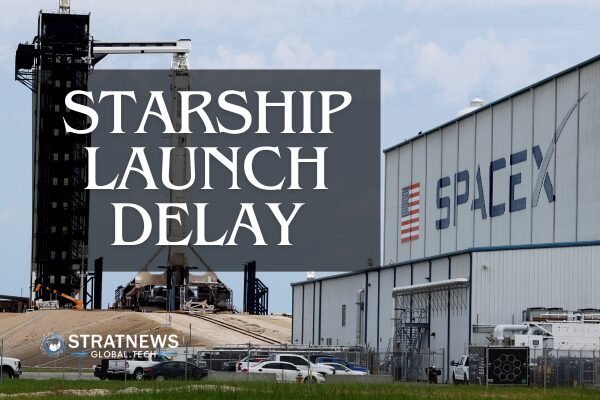Cloudy skies halt 10th SpaceX Starship test flight of Mars-bound rocket
SpaceX postponed the 10th launch of its Starship rocket on Monday evening, citing poor weather conditions in Texas. The delay marks another hurdle in the company’s push to develop a fully reusable rocket capable of supporting future missions to the Moon and Mars.
The towering launch vehicle, consisting of the 71-metre Super Heavy booster and the 52-metre Starship upper stage, had been fully fuelled and positioned on the launch pad at SpaceX’s Starbase facility. However, overcast skies and an unfavourable weather forecast led the company to call off the mission around 8:00 p.m. EST (0000 GMT).
Instead of launching, the company conducted a full dress rehearsal. SpaceX now plans to attempt the launch on Tuesday at 7:30 p.m. EST (2130 GMT).
Technical setbacks and repeated delays
This launch attempt followed a previous delay on Sunday caused by a liquid oxygen leak at the launchpad, according to Elon Musk. Writing on X (formerly Twitter), Musk shared the cause of the earlier cancellation and confirmed Monday’s rescheduled attempt. During Monday’s live stream, Musk briefly discussed Starship’s design and its long-term role in human space exploration.
Starship is central to both SpaceX’s commercial space operations and NASA’s future missions. NASA intends to use the rocket for its first crewed Moon landing since Apollo, targeted for 2027. Meanwhile, SpaceX aims to use Starship to launch larger batches of Starlink satellites, a vital revenue stream for the company.
Despite Musk’s ambitious goals, including the claim that Starship could eventually launch more than 24 times in a single day, progress has been slow. Multiple test failures this year—including early flight malfunctions, an in-space failure during the ninth launch, and a test stand explosion in June—have highlighted the risks of SpaceX’s test-to-failure development strategy.
High-risk strategy versus traditional rivals
Unlike competitors such as Blue Origin and United Launch Alliance, which focus on extensive ground testing before flight, SpaceX pushes the limits of its prototypes during test launches. While this approach can accelerate innovation, it also increases the chance of failure, sometimes limiting the collection of critical flight data.
Nonetheless, SpaceX continues rapid production of new Starship prototypes at Starbase. The facility, now a designated municipality thanks to a local vote in May, is expanding quickly with strong support from employees and nearby residents.
Starship’s latest design features key upgrades, including more powerful engines, a reinforced heat shield, and improved steering flaps. These changes are essential to the rocket’s goal of becoming fully reusable.
Before Starship can begin routine missions, SpaceX must demonstrate several key capabilities. These include safe landings from space, successful orbital payload deployments, and complex in-space refuelling procedures vital for deep-space missions.
What the next test flight aims to achieve
When the next launch proceeds, the rocket will lift off from Texas and separate mid-flight. The Super Heavy booster will aim for a controlled water landing, while the Starship upper stage will continue into space.
During the flight, Starship will attempt to deploy dummy Starlink satellites and restart one of its engines during its suborbital journey. It will then reenter Earth’s atmosphere over the Indian Ocean, testing its thermal protection system and steering flaps under extreme heat and pressure.
This upcoming test marks another crucial step in SpaceX’s long journey to building a reliable, reusable spacecraft designed for interplanetary travel.
with inputs from Reuters


